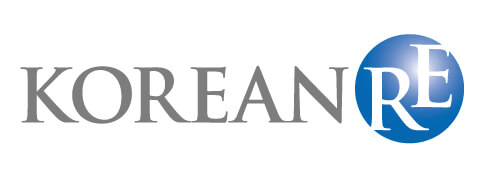
The primary life and P&C market is growing both in size and sophistication – e.g. in artificial intelligence. How can reinsurers help?
By Sungmuk Yoon
The Chinese market is a newly rising star in global reinsurance.
As the economy has developed, there has been consistent premium growth across life and non-life for consumers and its businesses.
A growing middle class, a strong manufacturing base and deep investment in technology have all helped China continue its rapid economic rise over the last decade. In addition, China’s ambitious One Belt One Road strategy has helped create an entrepreneurial and outward looking environment which is creating large, sophisticated risks around the world.
Premium growth
In 2001, the portion of Chinese reinsurance premium was only 0.27% of the world reinsurance premium, while in 2011 it became to 6.1% which makes China’s reinsurance market the second biggest one in the world.
During 2018, China’s overall insurance market earned Rmb3.8 trillion (US$543 billion) in gross written premiums.
Some economists have estimated that China could eventually emerge as the world’s largest insurance market in the 2030s.
Non-life players earned Rmb1.18 trillion (US$169 billion) which is an increase of 11.52% when compared wit h the previous year, while life players earned Rmb2.63 trillion (US$370 billion), an increase of 0.85%.
h the previous year, while life players earned Rmb2.63 trillion (US$370 billion), an increase of 0.85%.
This risk has in turn bolstered the reinsurance sector and in 2018 the life reinsurance market increased by 25% alone.
These figures increased further in 2019 and are set to grow again in 2020 and 2021.
While Covid-19 has had a significant impact on short-term GDP growth, there are already optimistic signs economic activity is returning to usual. Manufacturing has come back on stream with demand expected to return domestically and more gradually from abroad.
Some economists have estimated that China could eventually emerge as the world’s largest insurance market in the 2030s.
AI development
China’s insurtech capabilities are already some of the best in the world.
In March 2018, the China Banking and Insurance Regulatory Commission’s Shanghai bureau established the reinsurance blockchain lab in cooperation with China Re, Hannover Re, Gen Re, ZhongAn, ZhongAn Technology and Intel.
The group is building a reinsurance trading platform based on blockchain technology.
Korean Re is excited by the opportunities and believes that blockchain will increasingly be applied to the reinsurance market and enhance trading efficiencies.
In addition, artificial intelligence development is unfolding at a rapid pace with insurers such as Ping An placing an emphasis on enhancing data analytics, deep learning and biometrics.
AI requires investment, collaboration and government support and the Chinese insurance market is well placed to lead the world.
Market structure
The China reinsurance market has a so-called 6+7+200 structure.
The six means Chinese local reinsurance companies which are CPCR, China Life Re, PICC Re, Qianhai Re, Taiping Re and Taiping Re China.
This plural market structure accelerates competitions among market players and it makes the capacity more solid.
Another seven means overseas reinsurance companies located in China which are Swiss Re (Beijing Branch), Munich Re (Beijing Branch), Gen Re (Shanghai Branch), Scor (Beijing Branch), Hannover Re (Shanghai Branch) and RGA (Shanghai Branch) and Korean Re (Shanghai Branch).
The last 200 recommends to reinsurance players based overseas which are providing capacity into the market.
This plural market structure accelerates competitions among market players and it makes the capacity more solid, the reinsurance players develop management and technology, and finally contribute to the market development.
Korean Re opens in Shanghai
In January, Korean Re established a new office in Shanghai which is our second representation in China, after the opening of the Beijing liaison office in 1997.
While the office in Beijing has carried out market research and support functions, the Shanghai branch will conduct underwriting and claims.
Korean Re has RMB500 million (US$72.6 million) of capital to deploy in the market.
This year is the first year of setting up the branch, so Korean Re Shanghai will focus on the stability both for business and systems, and make this a strong basis for future development.
As the current traditional reinsurance market keeps soft and competitive, as mentioned above, Korean Re Shanghai is trying to turn to new emerging markets, such as AI related products and A&H.
In addition, as a local reinsurance player in China, Korean Re Shanghai Branch will expand its influence in China market, based on stable credit rating and a more detailed service offering.
Korean Re’s going global approach has been progressing for several years. We have also established a legal entity at Lloyd’s in the UK in 2015, a branch office in Labuan, Malaysia in 2017, a branch in Dubai in 2018 and a legal entity in Zurich in 2019.
Meanwhile, Korean Re has set-up a liaison office in Bogota, Columbia to expand into Latin America and the Caribbean region this year.
Sungmuk Yoon, chief executive, Korean Re Shanghai Branch
Telephone: (+86) 21 58887879 / Email: [email protected] / For more information see here

-
QBE | Elevating customer experience, humanising claims: QBE Asia’s ‘Solutions in a Box’
Vastly improving turnaround times and personalising service delivery, QBE Asia’s award-winning, end-to-end bundled claims solutions is a game-changer for the insurance industry.
-
Beazley | What does cyber protection look like from day 1 to day 600 and beyond?
Cybersecurity is no longer just an IT concern, but a governance issue that belongs on the boardroom agenda.
-
Sedgwick | Preparing for the next storm
Insurance industry needs to recalibrate, invest in innovation and strengthen systems, talent and data practices.
-
Peak Re | From climate modelling to market opportunity: Forging a new clarity on Southeast Asia’s climate risk
Southeast Asia's protection gap: a crisis of clarity, not just capital
